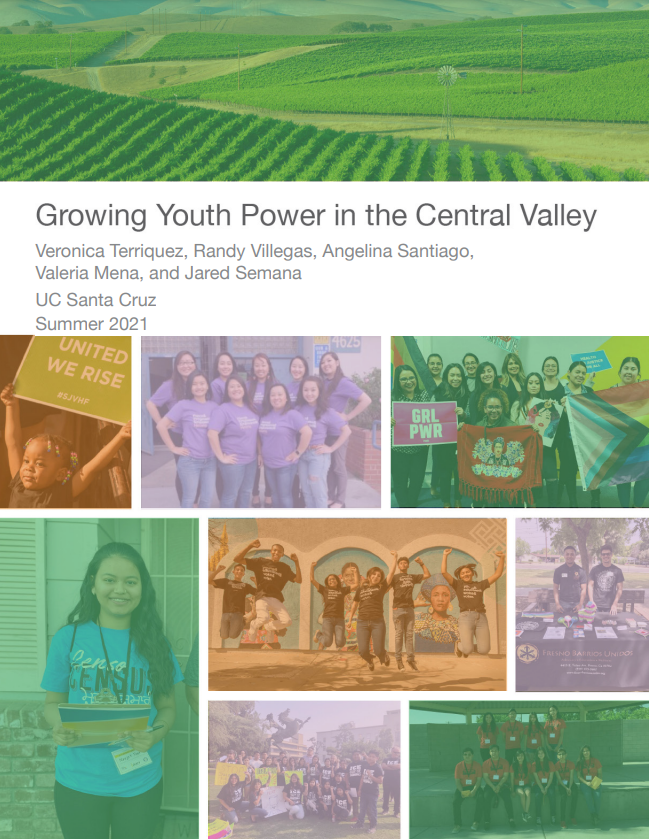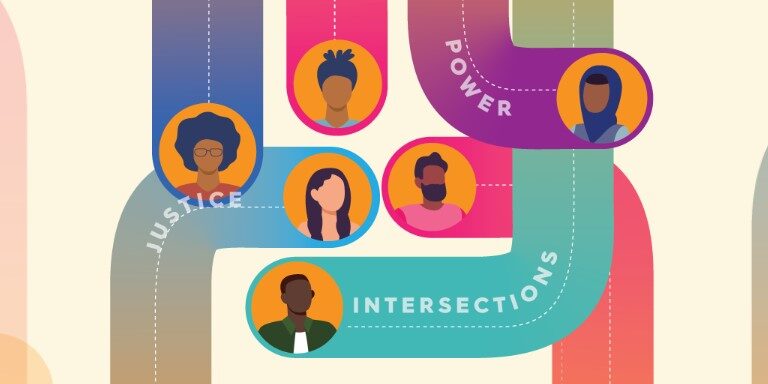
Growing Youth Power in the Central Valley
Summer 2021
By Veronica Terriquez PhD, Randy Villegas, Angelina Santiago, Valeria Mena, and Jared Semana
This report takes stock of youth voice and power in the Central Valley. Drawing on surveys, 70 in-depth interviews with youth leaders, participant observations, and voting records, this report seeks to contextualize and provide an account of youth-serving organizations in the region. It begins with a historical overview of the Central Valley, with a focus on migration into the region, its exclusionary political history, and prior efforts to address social justice. After assessing the shared contributions of youth leadership and youth organizing groups, the report then features grassroots and civic engagement campaign efforts. The authors discuss youths’ involvement in these campaigns, showing how these efforts build young people’s ability to lead civic action. The report goes on to discuss the surge in voter turnout, and features some of the activities that groups have engaged in to grow the young electorate. At the same time, this research demonstrates the need for ongoing efforts to reach emerging and young voters. An appendix lists grassroots youth-led campaign wins.
Report Highlights
While residing in a racially diverse region, youth of color in the Central Valley struggle against a legacy of White supremacy as they seek to exercise their voice and help shape policy decisions that impact their communities. At the same time, they can gain inspiration and learn from a rich local history of labor, environmental justice, and other movements led by people of color.
Youth of color comprise the majority of the young population of the Central Valley, but they also encounter disproportionate levels of poverty.
The Central Valley is home to a growing and increasingly interconnected infrastructure of youth organizing and youth leadership groups.
To varying degrees, young people in youth organizing and youth leadership groups are receiving developmental supports that help them thrive. Youth in these groups also vary in the extent to which they gain exposure to critical civics education that deepens their understanding of their diverse communities and the social issues they face.
Youth organizing groups are engaging young people in campaigns that develop members’ abilities to lead civic action, and in some cases, these have resulted in at least 25 concrete policy changes between 2017-2020.
While youth-led voter outreach efforts have contributed to recent significant increases in turnout among young voters in the region, large proportions of the young electorate remain disengaged from government elections.
Demographic Diversity and Economic Inequality
Young people of color become civically engaged in a social and economic context. Compared to the entire state, the population in the Central Valley is younger and contains a greater concentration of young people of color. According to the 2018 American Community Survey, 53% of the population is under age 35, compared to 47% for the whole state. Additionally, people of color dominate the population: Nearly two-thirds of these young people are Latinx, and there are substantial communities of Asian-Pacific Islanders and African Americans. In the Central Valley, 23% of residents under the age of 35 identify as White, compared to 28% in California.



